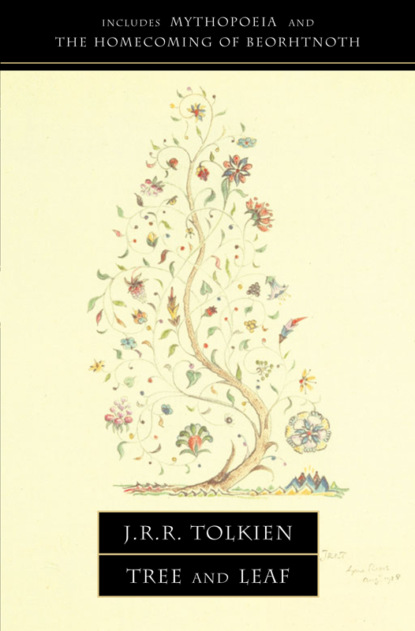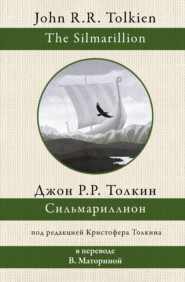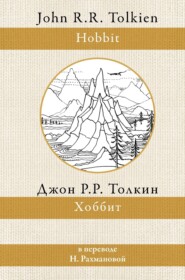По всем вопросам обращайтесь на: info@litportal.ru
(©) 2003-2024.
✖
Tree and Leaf: Including MYTHOPOEIA
Автор
Год написания книги
2019
Настройки чтения
Размер шрифта
Высота строк
Поля
FAIRY-STORY
What is a fairy-story? In this case you will turn to the Oxford English Dictionary in vain. It contains no reference to the combination fairy-story, and is unhelpful on the subject of fairies generally. In the Supplement, fairy-tale is recorded since the year 1750, and its leading sense is said to be (a) a tale about fairies, or generally a fairy legend; with developed senses, (b) an unreal or incredible story, and (c) a falsehood.
The last two senses would obviously make my topic hopelessly vast. But the first sense is too narrow. Not too narrow for an essay; it is wide enough for many books, but too narrow to cover actual usage. Especially so, if we accept the lexicographer’s definition of fairies: ‘supernatural beings of diminutive size, in popular belief supposed to possess magical powers and to have great influence for good or evil over the affairs of man’.
Supernatural is a dangerous and difficult word in any of its senses, looser or stricter. But to fairies it can hardly be applied, unless super is taken merely as a superlative prefix. For it is man who is, in contrast to fairies, supernatural (and often of diminutive stature); whereas they are natural, far more natural than he. Such is their doom. The road to fairyland is not the road to Heaven; nor even to Hell, I believe, though some have held that it may lead thither indirectly by the Devil’s tithe.
O see ye not yon narrow road
So thick beset wi’ thorns and briers?
That is the path of Righteousness,
Though after it but few inquires.
And see ye not yon braid, braid road
That lies across the lily leven?
That is the path of Wickedness,
Though some call it the Road to Heaven.
And see ye not yon bonny road
That winds about yon fernie brae?
That is the road to fair Elfland,
Where thou and I this night maun gae.
As for diminutive size: I do not deny that that notion is a leading one in modern use. I have often thought that it would be interesting to try to find out how that has come to be so; but my knowledge is not sufficient for a certain answer. Of old there were indeed some inhabitants of Faërie that were small (though hardly diminutive), but smallness was not characteristic of that people as a whole. The diminutive being, elf or fairy, is (I guess) in England largely a sophisticated product of literary fancy.
It is perhaps not unnatural that in England, the land where the love of the delicate and fine has often reappeared in art, fancy should in this matter turn towards the dainty and diminutive, as in France it went to court and put on powder and diamonds. Yet I suspect that this flower-and-butterfly minuteness was also a product of ‘rationalisation’, which transformed the glamour of Elfland into mere finesse, and invisibility into a fragility that could hide in a cowslip or shrink behind a blade of grass. It seems to become fashionable soon after the great voyages had begun to make the world seem too narrow to hold both men and elves; when the magic land of Hy Breasail in the West had become the mere Brazils, the land of red-dye-wood.
In any case it was largely a literary business in which William Shakespeare and Michael Drayton played a part.
Drayton’s Nymphidia is one ancestor of that long line of flower-fairies and fluttering sprites with antennae that I so disliked as a child, and which my children in their turn detested. Andrew Lang had similar feelings. In the preface to the Lilac Fairy Book he refers to the tales of tiresome contemporary authors: ‘they always begin with a little boy or girl who goes out and meets the fairies of polyanthuses and gardenias and appleblossom … These fairies try to be funny and fail; or they try to preach and succeed.’
But the business began, as I have said, long before the nineteenth century, and long ago achieved tiresomeness, certainly the tiresomeness of trying to be funny and failing. Drayton’s Nymphidia is, considered as a fairy-story (a story about fairies), one of the worst ever written. The palace of Oberon has walls of spider’s legs,
And windows of the eyes of cats,
And for the roof, instead of slats,
Is covered with the wings of bats.
The knight Pigwiggen rides on a frisky earwig, and sends his love, Queen Mab, a bracelet of emmets’ eyes, making an assignation in a cowslip-flower. But the tale that is told amid all this prettiness is a dull story of intrigue and sly go-betweens; the gallant knight and angry husband fall into the mire, and their wrath is stilled by a draught of the waters of Lethe. It would have been better if Lethe had swallowed the whole affair. Oberon, Mab, and Pigwiggen may be diminutive elves or fairies, as Arthur, Guinevere, and Lancelot are not; but the good and evil story of Arthur’s court is a ‘fairy-story’ rather than this tale of Oberon.
Fairy, as a noun more or less equivalent to elf, is a relatively modern word, hardly used until the Tudor period. The first quotation in the Oxford Dictionary (the only one before AD 1450) is significant. It is taken from the poet Gower: as he were a faierie. But this Gower did not say. He wrote as he were of faierie, ‘as if he were come from Faërie’. Gower was describing a young gallant who seeks to bewitch the hearts of the maidens in church.
His croket kembd and thereon set
A Nouche with a chapelet,
Or elles one of grene leves
Which late com out of the greves,
Al for he sholde seme freissh;
And thus he loketh on the fleissh,
Riht as an hauk which hath a sihte
Upon the foul ther he schal lihte,
And as he were of faierie
He scheweth him tofore here yhe.
This is a young man of mortal blood and bone; but he gives a much better picture of the inhabitants of Elfland than the definition of a ‘fairy’ under which he is, by a double error, placed. For the trouble with the real folk of Faërie is that they do not always look like what they are; and they put on the pride and beauty that we would fain wear ourselves. At least part of the magic that they wield for the good or evil of man is power to play on the desires of his body and his heart. The Queen of Elfland, who carried off Thomas the Rhymer upon her milk-white steed swifter than the wind, came riding by the Eildon Tree as a lady, if one of enchanting beauty. So that Spenser was in the true tradition when he called the knights of his Faërie by the name of Elfe. It belonged to such knights as Sir Guyon rather than to Pigwiggen armed with a hornet’s sting.
Now, though I have only touched (wholly inadequately) on elves and fairies, I must turn back; for I have digressed from my proper theme: fairy-stories. I said the sense ‘stories about fairies’ was too narrow.
It is too narrow, even if we reject the diminutive size, for fairy-stories are not in normal English usage stories about fairies or elves, but stories about Fairy, that is Faërie, the realm or state in which fairies have their being. Faërie contains many things besides elves and fays, and besides dwarfs, witches, trolls, giants, or dragons: it holds the seas, the sun, the moon, the sky; and the earth, and all things that are in it: tree and bird, water and stone, wine and bread, and ourselves, mortal men, when we are enchanted.
Stories that are actually concerned primarily with ‘fairies’, that is with creatures that might also in modern English be called ‘elves’, are relatively rare, and as a rule not very interesting. Most good ‘fairy-stories’ are about the aventures of men in the Perilous Realm or upon its shadowy marches. Naturally so; for if elves are true, and really exist independently of our tales about them, then this also is certainly true: elves are not primarily concerned with us, nor we with them. Our fates are sundered, and our paths seldom meet. Even upon the borders of Faërie we encounter them only at some chance crossing of the ways.
The definition of a fairy-story – what it is, or what it should be – does not, then, depend on any definition or historical account of elf or fairy, but upon the nature of Faërie: the Perilous Realm itself, and the air that blows in that country. I will not attempt to define that, nor to describe it directly. It cannot be done. Faërie cannot be caught in a net of words; for it is one of its qualities to be indescribable, though not imperceptible. It has many ingredients, but analysis will not necessarily discover the secret of the whole. Yet I hope that what I have later to say about the other questions will give some glimpses of my own imperfect vision of it. For the moment I will say only this: a ‘fairy-story’ is one which touches on or uses Faërie, whatever its own main purpose may be: satire, adventure, morality, fantasy. Faërie itself may perhaps most nearly be translated by Magic
– but it is magic of a peculiar mood and power, at the furthest pole from the vulgar devices of the laborious, scientific, magician. There is one proviso: if there is any satire present in the tale, one thing must not be made fun of, the magic itself. That must in that story be taken seriously, neither laughed at nor explained away. Of this seriousness the medieval Sir Gawain and the Green Knight is an admirable example.
But even if we apply only these vague and ill-defined limits, it becomes plain that many, even the learned in such matters, have used the term ‘fairy-tale’ very carelessly. A glance at those books of recent times that claim to be collections of ‘fairy-stories’ is enough to show that tales about fairies, about the fair family in any of its houses, or even about dwarfs and goblins, are only a small part of their content. That, as we have seen, was to be expected. But these books also contain many tales that do not use, do not even touch upon, Faërie at all; that have in fact no business to be included.
I will give one or two examples of the expurgations I would perform. This will assist the negative side of definition. It will also be found to lead on to the second question: what are the origins of fairy-stories?
The number of collections of fairy-stories is now very great. In English none probably rival either the popularity, or the inclusiveness, or the general merits of the twelve books of twelve colours which we owe to Andrew Lang and to his wife. The first of these appeared more than fifty years ago (1889), and is still in print. Most of its contents pass the test more or less clearly. I will not analyse them, though an analysis might be interesting, but I note in passing that of the stories in this Blue Fairy Book none are primarily about ‘fairies’, few refer to them. Most of the tales are taken from French sources: a just choice in some ways at that time, as perhaps it would be still (though not to my taste, now or in childhood). At any rate, so powerful has been the influence of Charles Perrault, since his Contes de ma Mère l’Oye were first Englished in the eighteenth century, and of such other excerpts from the vast storehouse of the Cabinet des Fées as have become well known, that still, I suppose, if you asked a man to name at random a typical ‘fairy-story’, he would be most likely to name one of these French things: such as Puss-in-Boots, Cinderella, or Little Red Riding Hood. With some people Grimm’s Fairy Tales might come first to mind.
But what is to be said of the appearance in the Blue Fairy Book of A Voyage to Lilliput? I will say this: it is not a fairy-story, neither as its author made it, nor as it here appears ‘condensed’ by Miss May Kendall. It has no business in this place. I fear that it was included merely because Lilliputians are small, even diminutive – the only way in which they are at all remarkable. But smallness is in Faërie, as in our world, only an accident. Pygmies are no nearer to fairies than are Patagonians. I do not rule this story out because of its satirical intent: there is satire, sustained or intermittent, in undoubted fairy-stories, and satire may often have been intended in traditional tales where we do not now perceive it. I rule it out, because the vehicle of the satire, brilliant invention though it may be, belongs to the class of travellers’ tales. Such tales report many marvels, but they are marvels to be seen in this mortal world in some region of our own time and space; distance alone conceals them. The tales of Gulliver have no more right of entry than the yarns of Baron Munchausen; or than, say, The First Men in the Moon or The Time-Machine. Indeed, for the Eloi and the Mor-locks there would be a better claim than for the Lilliputians. Lilliputians are merely men peered down at, sardonically, from just above the house-tops. Eloi and Morlocks live far away in an abyss of time so deep as to work an enchantment upon them; and if they are descended from ourselves, it may be remembered that an ancient English thinker once derived the ylfe, the very elves, through Cain from Adam.
This enchantment of distance, especially of distant time, is weakened only by the preposterous and incredible Time Machine itself. But we see in this example one of the main reasons why the borders of fairy-story are inevitably dubious. The magic of Faërie is not an end in itself, its virtue is in its operations: among these are the satisfaction of certain primordial human desires. One of these desires is to survey the depths of space and time. Another is (as will be seen) to hold communion with other living things. A story may thus deal with the satisfaction of these desires, with or without the operation of either machine or magic, and in proportion as it succeeds it will approach the quality and have the flavour of fairy-story.
Next, after travellers’ tales, I would also exclude, or rule out of order, any story that uses the machinery of Dream, the dreaming of actual human sleep, to explain the apparent occurrence of its marvels. At the least, even if the reported dream was in other respects in itself a fairy-story, I would condemn the whole as gravely defective: like a good picture in a disfiguring frame. It is true that Dream is not unconnected with Faërie. In dreams strange powers of the mind may be unlocked. In some of them a man may for a space wield the power of Faërie, that power which, even as it conceives the story, causes it to take living form and colour before the eyes. A real dream may indeed sometimes be a fairy-story of almost elvish ease and skill – while it is being dreamed. But if a waking writer tells you that his tale is only a thing imagined in his sleep, he cheats deliberately the primal desire at the heart of Faërie: the realisation, independent of the conceiving mind, of imagined wonder. It is often reported of fairies (truly or lyingly, I do not know) that they are workers of illusion, that they are cheaters of men by ‘fantasy’; but that is quite another matter. That is their affair. Such trickeries happen, at any rate, inside tales in which the fairies are not themselves illusions; behind the fantasy real wills and powers exist, independent of the minds and purposes of men.
It is at any rate essential to a genuine fairy-story, as distinct from the employment of this form for lesser or debased purposes, that it should be presented as ‘true’. The meaning of ‘true’ in this connection I will consider in a moment. But since the fairy-story deals with ‘marvels’, it cannot tolerate any frame or machinery suggesting that the whole story in which they occur is a figment or illusion. The tale itself may, of course, be so good that one can ignore the frame. Or it may be successful and amusing as a dream-story. So are Lewis Carroll’s Alice stories, with their dream-frame and dream-transitions. For this (and other reasons) they are not fairy-stories.
There is another type of marvellous tale that I would exclude from the title ‘fairy-story’, again certainly not because I do not like it: namely pure ‘Beast-fable’. I will choose an example from Lang’s Fairy Books: The Monkey’s Heart, a Swahili tale which is given in the Lilac Fairy Book. In this story a wicked shark tricked a monkey into riding on his back, and carried him half-way to his own land, before he revealed the fact that the sultan of that country was sick and needed a monkey’s heart to cure his disease. But the monkey outwitted the shark, and induced him to return by convincing him that the heart had been left behind at home, hanging in a bag on a tree.














